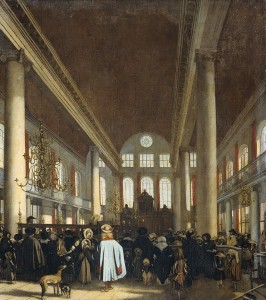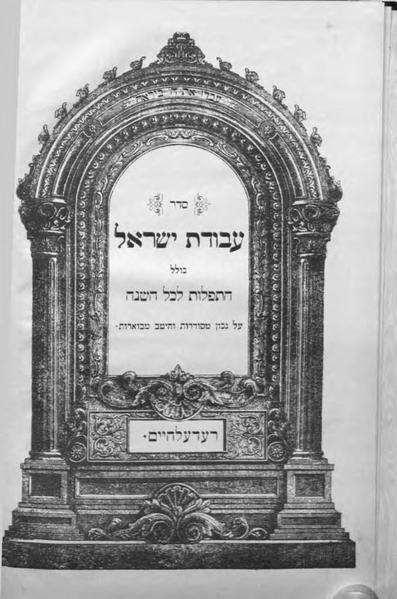
“Interieur van de Portugese synagoge te Amsterdam by Emanuel de Witte (circa 1680)
DOWNLOAD:
The impetus for writing this monograph came from a long-time observation that most worshipers and, by extension Shalechei Tzibur [prayer leaders], are either generally unaware of certain basic Laws regarding Public Prayer and Conduct in the Synagogue or simply lax in their proper observance. As such, I felt that there is a need to refresh in the minds of the general public certain fundamental regulations in these areas.
I have chosen to translate the prefatory pages relating to these matters from the classic Siddur Avodas Yisroel by Dr. Seligmann Baer, published in Rödelheim in 1868. His summary is terse, yet comprehensive, and very closely aligned with the accepted Halochoh. Although, in those instances where there is a difference from commonly accepted practice and custom, I have tried to augment his text with instructions found in the popular Siddur Tefilas Kol Peh (TKP, Shaliach Tzibur edition, published by Eshkol, Jerusalem, and which was prepared in accordance with the Mishne Berura) and other sources.
A Few Concise Rules Regarding Public Prayer and Guidelines for the Shaliaḥ Tzibur
As Translated from Siddur Avodas Yisroel by Dr. Seligman Baer, 5628 [1868]
Comprising: Laws of Going to the בית הכנסת [Beit Knesset], General Laws of Prayer, Laws of אמן [saying “Amen“], Laws of קדיש [saying Kaddish], and Guidelines for the שליח ציבור [Shaliaḥ Tzibur — Prayer Leader]
Translated 5762 (2002). We are grateful to Reuven Brauner for contributing his translation of the rules for public prayer explained by Dr. Seligman Baer in his Seder Avodat Yisroel (1868), a critical edition of a prayerbook witnessing the Nusaḥ Ashkenaz (liturgical tradition of the Jews of Ashkenaz).

“Rules of Etiquette for Public Prayer, by Isaac Seligman Baer (1868)” is shared through the Open Siddur Project with a Creative Commons Attribution-ShareAlike 4.0 International copyleft license.









Leave a Reply